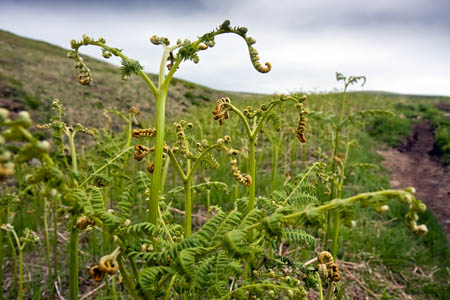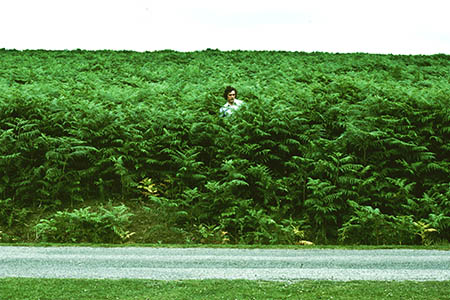Moorland managers have hailed a temporary suspension of the ban on a herbicide used to control bracken.
A Europe-wide bar on using Asulam means Britain’s uplands could be overtaken by the invasive plant, the Moorland Association said.
But the Government’s advisory committee on pesticides has advised that use and storage of the chemical will be allowed for a period during the bracken growing season over summer and autumn.
The temporary lifting of the ban was welcomed, but experts said they would continue to press for the rules to be changed to permit its use to combat the growth of bracken.
The EU regulation was introduced last year to stop the chemical entering the food chain through spinach.
Simon Thorp, Bracken Control Group co-ordinator said the long-term future for Asulam was still in the balance.
He said: “On the one hand this is a victory, on the other we must wait to see if Brussels will re-register the herbicide and that will not happen until 2016 at the earliest.
“We will have to re-apply for an emergency authorisation again next year and it will be illegal to store Asulam during 2013, before and after the agreed dates. The battle over bracken has only temporarily been won.”
The temporary arrangements will permit the purchase and storing of the herbicide from 20 May and its use from 1 July to 31 October. The provisions have been endorsed by the Department for Environment, Food and Rural Affairs.
Robert Benson, chairman of the Moorland Association which represents owners and managers of moorland estates, said members were delighted to have a season’s breathing space.
He said: “It gives us time to further galvanise efforts to safeguard Asulam’s long-term use in protecting vast tracts of precious moorland from massive bracken infestation.
“Without this safe, selective, government-approved herbicide, bracken would change the face of Britain’s countryside, devastating wildlife and destroying grouse moor management. Around £100m a year would be lost to the UK rural economy.
“Three-quarters of the world’s heather moorland is found in the UK and without Asulam, 50 per cent would already be gone.”
Moorland owners said the breeding of Britain’s red grouse would be badly hit, along with the grouse shooting industry, worth £67.7m in England and £23.3m in Scotland.
Dr Alastair Leake, director of policy of the Game & Wildlife Conservation Trust said: “This decision is beneficial on so many fronts: human health, biodiversity, agriculture, leisure, historic environment etc.
“Not least because the environment created by bracken beds has been shown to favour sheep tick Ixodes ricinus activity with up to 70 per cent of all tick activity in heath and dry moorland areas associated with bracken dominated habitats.”
Dr Leake said bracken can completely re-establish its dominance within about three years if treatment is not continued.

